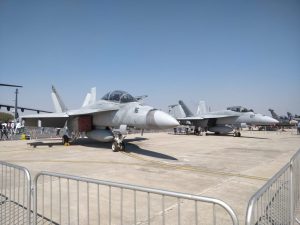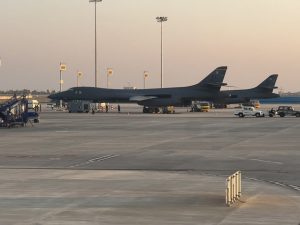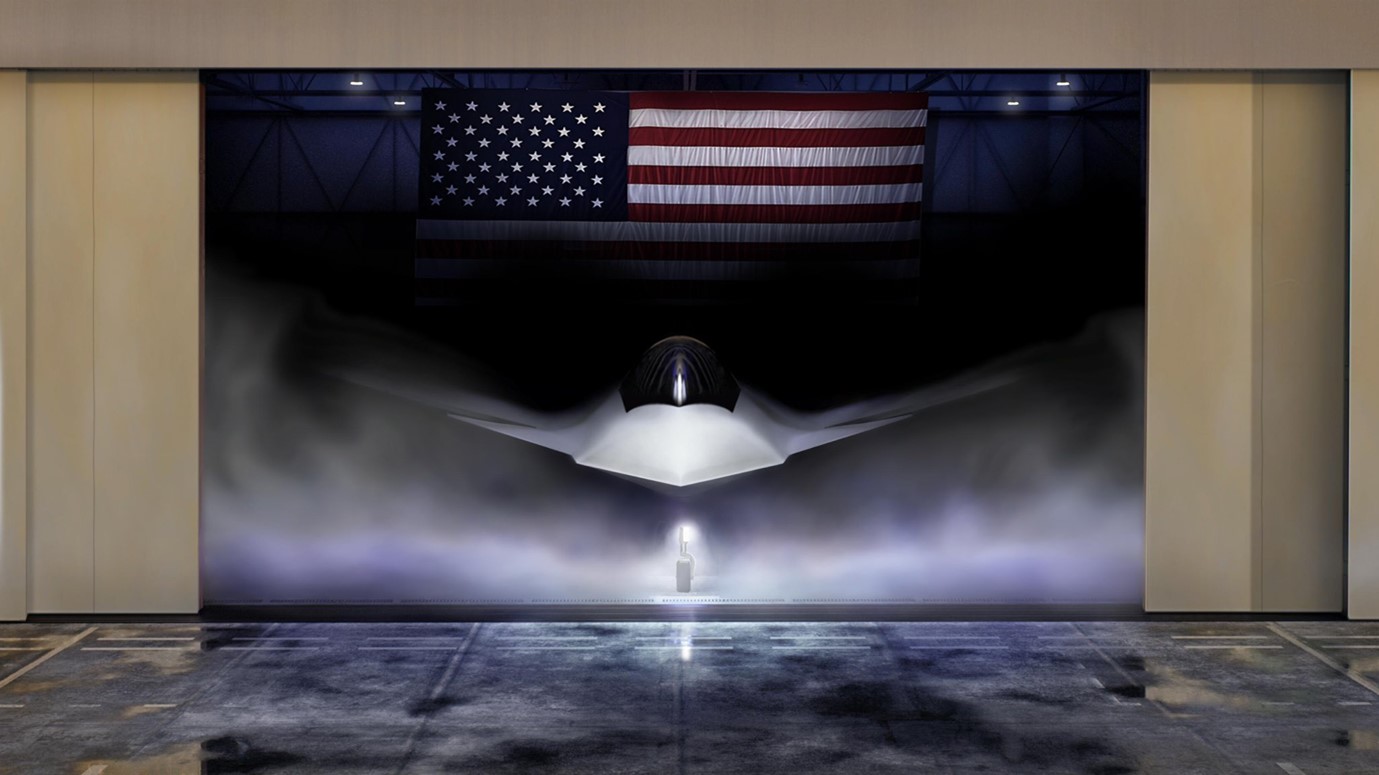
Decoding US Presence At Aero India 2023: Business Or Signalling

Introduction
The 14th edition of the five-day Aero India 2023, the biggest air show in Asia concluded on February 17, 2023. The grand event showcased the strides India is making in the field of defence and aerospace and also provided business opportunities to the agencies from various countries allowing them to showcase their products. The total business transaction was reported to be worth around Rs 80,000 crore.
The most glaring thing that stood out in this year’s air show as compared to the previous ones was the minimal presence from Russia and the predominant USA presence. Russia has been India’s major weapons supplier since the days of the Soviet Union, but recent years are showing a downward trend. This year at Aero India, Rosoboronexport, Russia’s state-owned weapons exporter, shared a stall with United Aircraft and Almaz-Antey, showcasing models of airplanes, vehicles, radars, and tanks.
An array of aircraft from the USA participated in Aero India 2023. In addition to the B-1 bomber, the line-up included the US Air Force’s latest fifth-generation fighters: the stealthy, supersonic, multirole F-35A Lightning II and F-35A Joint Strike Fighter, F-16 Fighting Falcon and the US Navy’s F/A-18E and F/A-18F Super Hornet multirole fighters. Besides aircraft, several US defence companies participated in Aero India including Aero Metals Alliance, Astronautics Corporation of America, Boeing, GE Aerospace, General Atomics Aeronautical Systems, Lockheed Martin, Pratt & Whitney, and TW Metals.

The latest F-35 aircraft made a debut at the air show and their participation triggered speculation and debate about the purpose of their presence. The debate is about whether the participation is a sales pitch or geo-political strategic signaling.
F-35 Lightning II/Joint Strike Fighter
The F-35A is the U.S. Air Force’s latest, highly advanced multi-role, supersonic, stealth fifth-generation fighter. The aircraft can perform both air superiority and strike missions and is also capable of electronic warfare and intelligence, surveillance, and reconnaissance. Lockheed Martin is the prime F-35 contractor, with principal partners Northrop Grumman and BAE Systems. Its development is principally funded by the United States, with additional funding from program partner countries of NATO and close U.S. allies, including the United Kingdom, Australia, Canada, Italy, Norway, Denmark, the Netherlands, and Turkey. The program has drawn criticism for its unprecedented size, complexity, cost, and delayed deliveries.

The United States is picky about which countries can acquire the F-35, and India would not be interested in acquiring it as of now, due to several reasons.
- The procurement does not conform to the Indian scheme of being self-reliant and pursuing its own fifth-generation fighter AMCA development program.
- The cost of the platform would be too high and affordability will be an issue.
- The aircraft is packed with the latest technology, features, computing power, and systems. Will the USA be willing to share it with a country outside NATO is a doubtful question.
- The domestic needs of the USA and its development partners and NATO allies would keep the production lines busy for the next twenty years or more. Supply to any other country would be low on priority.
- India pulled out of the co-development program of fifth-generation FGFA with Russia, possibly due to high cost and TOT issues. Similar challenges would arise in this deal is pursued.
- The USA had an issue with the Supply of this aircraft to Turkey due to the acquisition of the S-400 AD system by Turkey from Russia. A similar situation exists in India as well.


The presence of the F-35 at the air show is not a sales pitch, but to signal the importance of the bilateral defence relationship between the USA and India. This is substantiated by the statement of Major General Julian C. Cheater, Assistant Deputy Under Secretary of the Air Force, International Affairs. He said, “The F-35 represents the leading edge of US fighter technology. Aero India is an ideal forum to showcase the most advanced, capable, lethal, and interoperable weapons systems of USA”. Interestingly, the F-35 fighter jets were parked at distance from other aircraft and were being closely guarded by US Air Force personnel at Aero India. Nobody, including top Indian defence officials, were allowed to come nearby.
F-21 (Variant of the F-16 Block 70)
A Proposal to procure 114 multi-role fighter aircraft by Indian Air Force has been in process for the last five years. Lockheed Martin has offered its F-21, a variant of the F-16 Block 70, claimed to be specially configured to meet the requirements of the Indian Air Force’s (IAF) MRFA program.
Lockheed Martin, during the Aero India 2023, unveiled the configuration of the F-21 offered to the Indian Air Force and made a sales pitch with the following offers:-
- The F-21 offers the following capabilities: An advanced APG-83 Active Electronically Scanned Array (AESA) radar, which has detection ranges nearly double that of previous mechanically scanned array radars and the ability to track and attack more targets with higher precision. Cockpit upgrades, including a new Large Area Display (LAD) which enhances pilot situational awareness. An Advanced Electronic Warfare (EW) System, developed uniquely for India, which provides enhanced survivability against ground and air threats. Long-Range Infrared Search & Track (IRST), enabling pilots to passively detect threats. Triple Missile Launcher Adapters (TMLAs) allow the F-21 to carry 40% more air-to-air weapons than previous F-16 designs. A Dorsal Fairing enabling increased growth capacity and indigenous systems integration in the future.
- F-21 is an advanced, single-engine, multi-role fighter with the most optimal life-cycle cost for the IAF and the longest service life among all competitors: 12,000 flight hours.
- The F-21 is also the only fighter in the world capable of both probe/drogue (the most widely used in the world) and boom (USAF standard) aerial fuelling capability. This, along with the conformal fuel tanks (CFT), provides the Indian Air Force with greater penetration and stationary flight dwell capability.
- Make in India. Announcement of partnership with local company Tata to create TLMAL – Tata Lockheed Martin Aerostructures Limited – a joint venture that currently manufactures components for the F-16 supply chain, and would be responsible for manufacturing the aircraft in India, should it win the MRFA competition.
- In addition to local manufacturing of the F-21, TLMAL would significantly increase its share of the global F-16 fighter maintenance, repair, and operations (MRO) market, along with that of other Lockheed Martin products to which it would also have access.

F/A-18 Super Hornet
The Indian Navy’s aircraft carrier, INS Vikramaditya, currently operates Mig-29K fighters. Indian Navy has been looking for a suitable carrier-borne aircraft for its second aircraft carrier. Earlier the LCA navy project was converted into a technology demonstrator and it was announced that the experience gained would be utilised to develop TEDBF – Twin Engine Deck-Based Fighter aircraft. Besides the domestic program, the IN has been looking at the import of aircraft for immediate needs.
The Ministry of Defence (MoD) issued a Request for Information (RFI) for MRCBF (Multi-Role Carrier Borne Fighter) procurement in January 2017 for 57 fighters, which was subsequently reduced to 26 fighters to be procured via the government-to-government (G2G) route. These include eight twin-seater trainer variants and 18 single-seater variants. The choice of the (MRCBF) program to equip the INS Vikrant is between the twin-engine US Boeing F/18 E/F Super Hornet and the French Rafale Marine (M).


The McDonnell Douglas F/A-18 Super Hornet is an all-weather, twin-engine, carrier-capable, multirole combat aircraft, designed as both a fighter and attack aircraft. It is designed by McDonnell Douglas and Northrop. Boeing F/A-18 Super Hornets is in the contest to supply fighter planes for the Indian Navy. Participation in Aero India 2023 is to support the sales pitch.
B-1 Lancer Strategic Bomber
The Rockwell B-1 is a supersonic variable-sweep wing, heavy bomber used by the United States Air Force. It is one of three strategic bombers serving in the U.S. Air Force fleet along with the B-2 Spirit and the B-52 Stratofortress. The B-1B Lancer, a supersonic heavy bomber, is capable of carrying out missions worldwide from bases in the US and other locations. Regarded as the backbone of America’s long-range bomber force, it carries the largest conventional payload of both guided and unguided weapons in the USAF.
Two B-1B Lancer supersonic heavy bombers of the United States Air Force (USAF) arrived at Aero India 2023, journeying to India from their temporary duty location at Andersen Air Force Base, Guam. The B-1B was in India for the first time on February 3, 2021, conducting a fly-by on the inaugural day of Aero India as it was escorted by the Tejas fighter of the Indian Air Force. The bomber’s return to India for Aero India 2023 was to underscore the importance that the US places on the growing strategic partnership with India.

A release issued by the US embassy quoted Major General Julian C. Cheater, Assistant Deputy Under Secretary of the US Air Force, International Affairs, as saying: “The B-1 offers flexible options to senior leaders and combatant commanders. Greater integration with our Allies and partners throughout the region is a positive step towards greater interoperability.”
Rear Admiral Michael Baker, Senior Defence Official and Defence Attaché at the U.S. Embassy in New Delhi said, “We are happy to have the B1 in India for the second time. These bombers made the journey from South Dakota to Guam and then to India just to add another exciting dimension to Aero India ‘23. It’s a long mission to travel from the continental U.S. to the Indian Ocean; but it was worth it to be part of the biggest air show in the region hosted by our Major Defence Partner, India. The U.S. and India continue to deepen Defence cooperation. We have two great militaries that are even better when we work together.”
Conclusion
Indo-US relations is being governed by the geo-political situation in the Indo-Pacific area. Besides the existing market for weapons sales in India, military-level engagement is on the rise between the two countries.
A large presence of the US contingent at Aero India 2023 was both for commercial business reasons and signaling purposes. This is corroborated by the following statements. According to Charge d’Affaires Ambassador A Elizabeth Jones, “The size of the US delegation, shows that the US-India strategic alliance is one of our most vital ties, India and the United States are working together in so many ways to ensure a free and open, prosperous, connected, and resilient Indo-Pacific region, where our democracies can thrive.” Jedidiah P Royal, Principal Deputy Assistant Secretary of Defence for Indo-Pacific Security Affairs, said, “These close partnerships have generated tens of thousands of jobs in India and enabled critical transfers of technology and manufacturing expertise to India. US companies have established engineering centers and manufacturing hubs, and have also invested in building R&D centers that harness India’s incredibly talented scientists and engineers to advance cutting-edge R&D projects.”
It can be safely concluded that the purpose of the large US contingent at Aero India 2023 was both for promoting business opportunities and for political signalling. While the F-16/F-21 and F-18 aircraft were brought in for the sales pitch, the F-35 and B-1 were for signalling purposes.
********************************************************************************************************************
References:-
https://en.wikipedia.org/wiki/Lockheed_Martin_F-35_Lightning_II
https://en.wikipedia.org/wiki/McDonnell_Douglas_F/A-18_Hornet
https://idsa.in/idsacomments/the-race-for-the-indian-naval-fighter-contract-sscrajiv-040123
Disclaimer
The opinions expressed in this article are the author’s own and do not reflect the views of Chanakya Forum. All information provided in this article including timeliness, completeness, accuracy, suitability or validity of information referenced therein, is the sole responsibility of the author. www.chanakyaforum.com does not assume any responsibility for the same.
Chanakya Forum is now on . Click here to join our channel (@ChanakyaForum) and stay updated with the latest headlines and articles.
Important
We work round the clock to bring you the finest articles and updates from around the world. There is a team that works tirelessly to ensure that you have a seamless reading experience. But all this costs money. Please support us so that we keep doing what we do best. Happy Reading
Support Us















POST COMMENTS (1)
Kalidan Singh